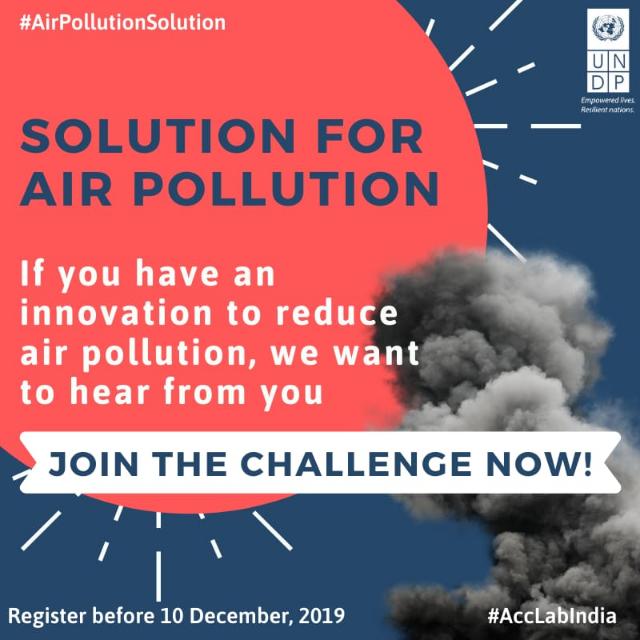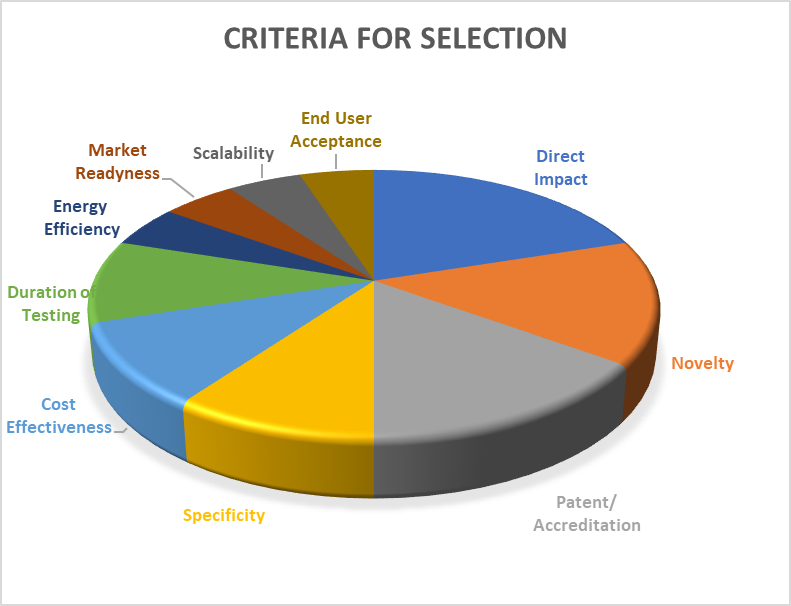By Swetha Kolluri, Rozita Singh, Dr. Krishnan S. Raghavan
How we reshaped Mahatma Gandhi's innovation challenge to combat air pollution
January 29, 2020
Photo: Creative Commons
Solving problems of sustainability of village economy or crowdsourcing ideas is not a new phenomenon. The Father of the Nation, Mahatma Gandhi, in 1929, invested not only in the philosophy of Charkha but also in its technology! (a spinning wheel device for spinning thread or yarn from fibres).
He announced a Design Competition for best design of Charkha who could make it women-friendly, light weight and cost effective. The reward was prize money of INR 1 Lakh or GBP 7700.
Almost 100 years later, India is facing new complex challenges like air pollution and climate change. 14 Indian cities feature among the top-20 most polluted cities of the world (WHO data).
While pollution in metropolitan cities like Delhi are widely reported, there are many tier-2 cities in Northern and Eastern parts of India that have hazardous air quality. Every year more than 140 million Indians are exposed to severe air pollution when AQI crosses 300 during winters. While exact source apportionment for particulate matter is different for each region and widely debated among scientific communities, the major sources of air pollution are well known as – vehicular emissions, waste and biomass open burning, construction and road dust, industrial emissions and agricultural waste burning.
But what are the solutions?
The state and national governments have been trying several solutions in various forms - policy mechanisms like odd-even rule on four wheelers; regulations like BS-VI (Bharat Standards) emissions norms on vehicles that will bring Indian emission regulations almost at par with those of EU; penalizing farmers who burn stubble; incentivizing farmers to adopt sustainable harvesting practices etc.
While there are no quick fixes for this complex problem, we must pay attention to the fact that air pollution is a problem of ‘flows’ and not ‘stocks’ as in case of climate change. In the recent past, Beijing has made significant improvements in air quality in less than five years of declaration of ‘war on pollution’ by President Xi Jinping. How long would it take North India to breathe clean air? Can innovations help us accelerate to realize our right to clean air? Can we learn something from Gandh ji’s innovative way of finding sustainable solutions for problems?
At AccLab India, we were confident that the land of jugaad and grassroots innovators would have many more innovative solutions. We took inspiration from Mahatma Gandhi’s design competition, momentum from our Climate Change team at UNDP, and launched the Innovation Challenge: “Solution for Air Pollution”.
A quick analysis of similar innovation challenges and hackathons informed us that there are many bright ideas but very few are prototyped. So, we emphasized that the applicants should have tried and tested their innovation for at least 6 months and should have a strong proof-of-concept to reduce, avoid and/or improve upon the current levels of air pollution.
After reviewing the submitted entries based on key criteria, the shortlisted entries were interviewed by a panel of experts.
This is how we arrived at the top 3 winners of our challenge:
⭐️ A2P Energy Solution Pvt Ltd converts waste biomass into NextGen biofuels.
⭐️ Urban Air labs uses Breathing Roots technology to Improve Indoor Air Quality.
⭐️ Pi Green Pvt Ltd has a 'Filterless' Cutter technology for reduction of PM emissions from vehicles & ambient air.
What next?
Most innovation challenges in India end with one or more of these options - award, reward, investment, mentorship. The format of engagement is standardized with the end goal of promoting startups in order to promote innovations. Our approach to #AirPollutionSolution Challenge is slightly different! When AccLab India started conceptualizing this challenge, our focus was more on impact - measured in terms of potential to reduce/mitigate air pollution. We were willing to partner with unregistered entities, individuals, research organizations, civil society organizations and startups who show sparks of impact through innovation. Since accelerator labs are not designed to become another startup incubation program, the nature of our association with the winners of innovation challenge is not a generic one but customized to their expansion plans.
AccLab India’s role in this case would focus at ‘strategies and systems’ that would help these innovations scale-up fast. For instance, our key questions would be: what market-based incentives would help increase uptake of energy products generated from paddy straw to reduce emissions from stubble burning? What regulatory mechanisms are required to place more carbon cutters on vehicles in order to reduce air pollution caused by vehicular emissions?
We have teamed up with our Climate Change Team to work closely with the three winning startups in 2020, facilitate them through our networks, strategic partnerships, connections with markets, impact investors, and pitch their innovations on global platforms. All this to be done while not losing focus on systems-level dialogue with government and markets that help to #BeatAirPollution faster!
(Ms. Swetha Kolluri is Head of Experimentation, Ms. Rozita Singh is Head of Solutions Mapping, and Dr. Krishnan S. Raghavan is Head of Exploration for UNDP’s Accelerator Lab in India)
Missed our first blog? Read it here
The UNDP Accelerator Lab in India is part of the world’s largest and fastest learning network working with development challenges. Globally it was launched in 2019 with over 60 Lab teams covering 78 countries. The founding investors of the Accelerator lab are the Qatar Fund for Development (QFFD) and the Federal Ministry for Economic Cooperation and Development of Germany. The network taps into local innovations to create actionable insights and reimagine sustainable development for the 21st century. The network is expanding and soon there will be 90 labs covering 114 countries.

 Locations
Locations









